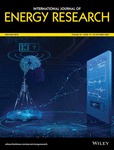Modeling the effect of non-linear process parameters on the prediction of hydrogen production by steam reforming of bio-oil and glycerol using artificial neural network
Summary
Biomass-derived substrates such as bio-oil and glycerol are gaining wide acceptability as feedstocks to produce hydrogen using a steam reforming process. The wide acceptability can be attributed to a huge amount of glycerol and bio-oil obtained as by-products of biodiesel production and pyrolysis processes. Several parameters have been reported to affect the production of hydrogen by biomass steam reforming. This study investigates the effect of non-linear process parameters on the prediction of hydrogen production by biomass (bio-oil and glycerol) steam reforming using artificial neural network (ANN) modeling technique. Twenty different multilayer ANN model architectures were tested using datasets obtained from the bio-oil and glycerol steam reforming. Two algorithms namely Levenberg-Marquardt and Bayesian regularization were employed for the training of the ANNs. An optimized network configuration consisting of 3 input layer 14 hidden neurons, 1 output layer, and 3 input layer, 5 hidden neurons, and 1 output layer were obtained for the Levenberg-Marquardt and Bayesian regularization trained network, respectively for hydrogen production by bio-oil steam reforming. While an optimized network configuration consisting of 5 input nodes, 9 hidden neurons, 1 output node, and 5 input nodes, 8 hidden neurons, and 1 output node were obtained for Levenberg-Marquardt and Bayesian regularization trained network, respectively for hydrogen production by glycerol steam reforming. Based on the optimized network, the predicted hydrogen production from the bio-oil and glycerol steam agreed with the actual values with the coefficient of determination (R2) > 0.9. A low mean square error of 3.024 × 10−24 and 6.22 × 10−15 for the optimized for Levenberg-Marquardt and Bayesian regularization-trained ANN, respectively. The neural network analyses of the two processes showed that reaction temperature and glycerol-to-water molar ratio were the most relevant factors that influenced the production of hydrogen by bio-oil and glycerol steam reforming, respectively. This study has demonstrated the robustness of the ANN as a technique for investigating the effect of non-linear process parameters on hydrogen production by bio-oil and glycerol steam reforming.




